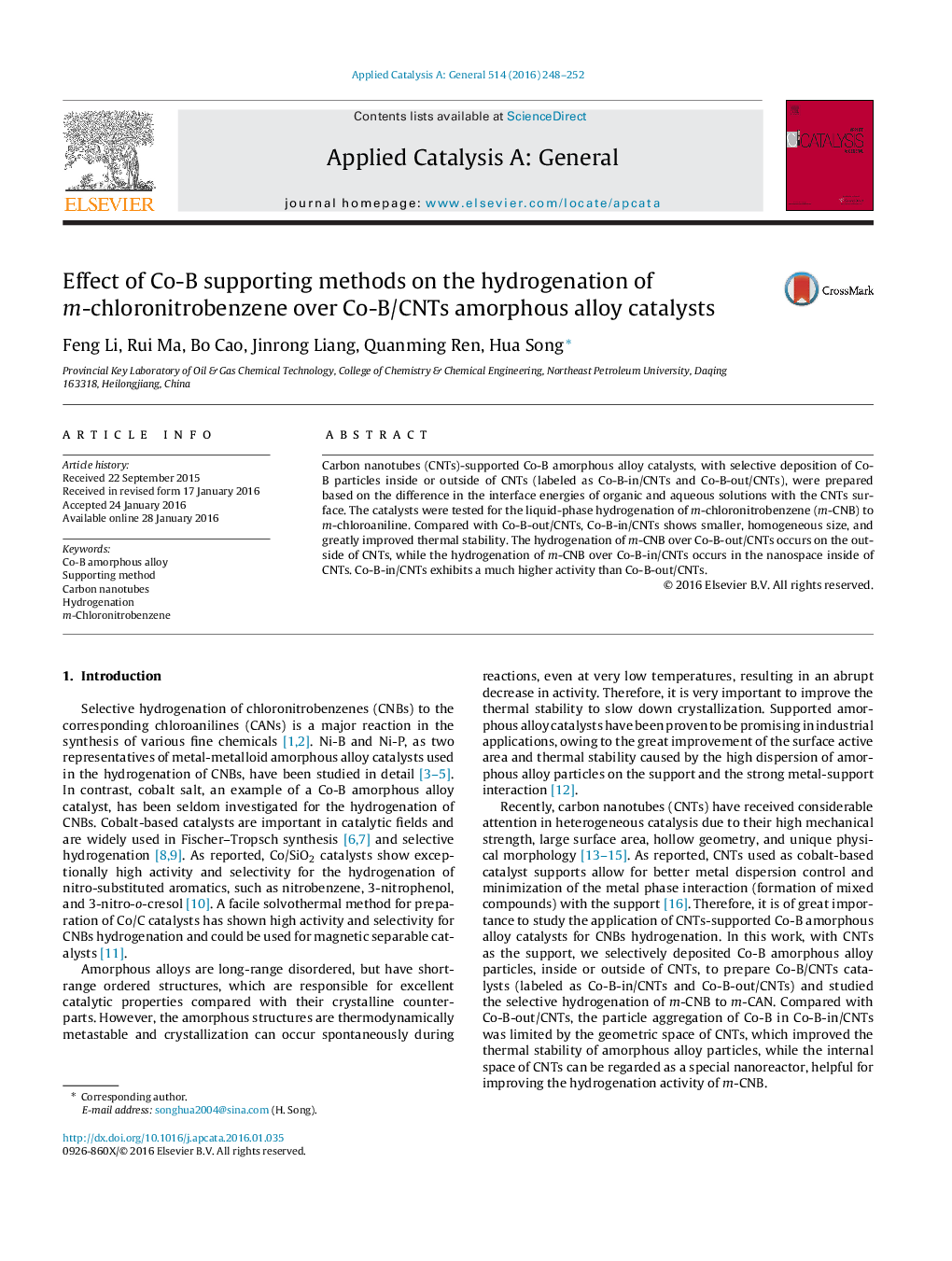| کد مقاله | کد نشریه | سال انتشار | مقاله انگلیسی | نسخه تمام متن |
|---|---|---|---|---|
| 38961 | 45798 | 2016 | 5 صفحه PDF | دانلود رایگان |
• Co-B particles were selectively deposited inside or outside CNTs.
• CNTs-confined Co-B particles were small and non-agglomerated.
• Thermostability of the Co-B amorphous alloy was enhanced when confined in CNTs.
• Co-B particles inside CNTs showed higher hydrogenation activity than Co-B particles outside CNTs.
Carbon nanotubes (CNTs)-supported Co-B amorphous alloy catalysts, with selective deposition of Co-B particles inside or outside of CNTs (labeled as Co-B-in/CNTs and Co-B-out/CNTs), were prepared based on the difference in the interface energies of organic and aqueous solutions with the CNTs surface. The catalysts were tested for the liquid-phase hydrogenation of m-chloronitrobenzene (m-CNB) to m-chloroaniline. Compared with Co-B-out/CNTs, Co-B-in/CNTs shows smaller, homogeneous size, and greatly improved thermal stability. The hydrogenation of m-CNB over Co-B-out/CNTs occurs on the outside of CNTs, while the hydrogenation of m-CNB over Co-B-in/CNTs occurs in the nanospace inside of CNTs. Co-B-in/CNTs exhibits a much higher activity than Co-B-out/CNTs.
Figure optionsDownload high-quality image (187 K)Download as PowerPoint slide
Journal: Applied Catalysis A: General - Volume 514, 25 March 2016, Pages 248–252
